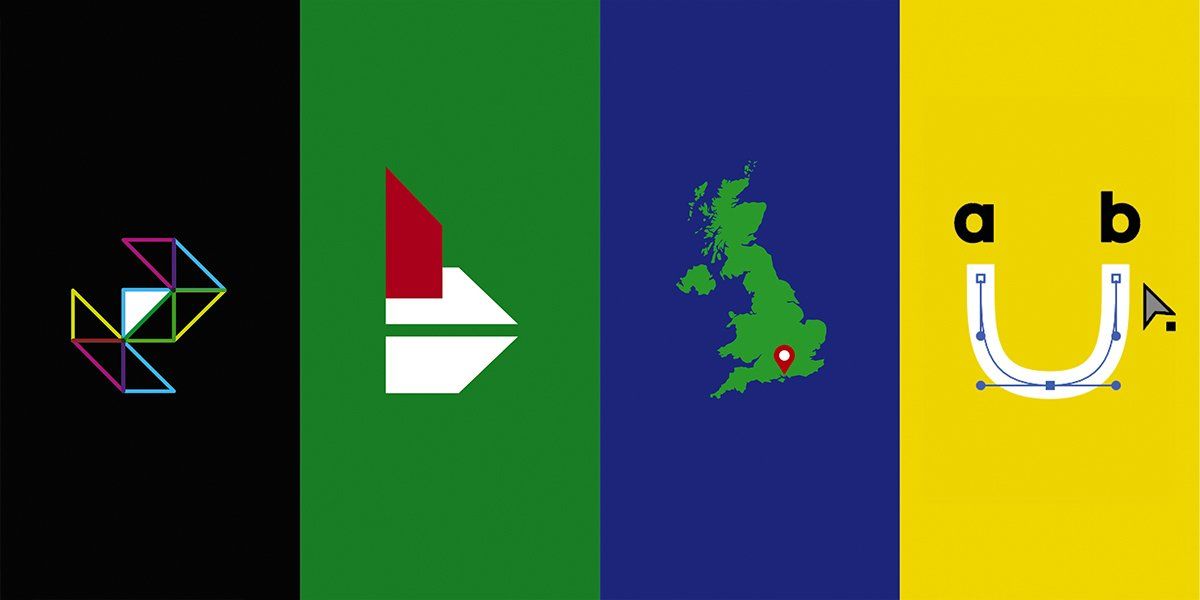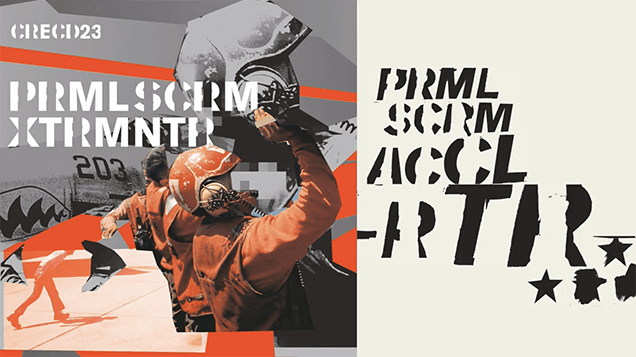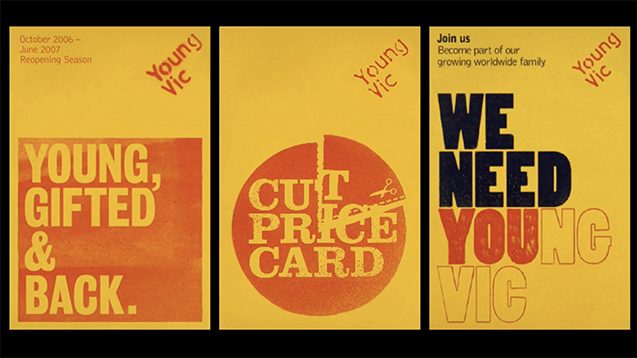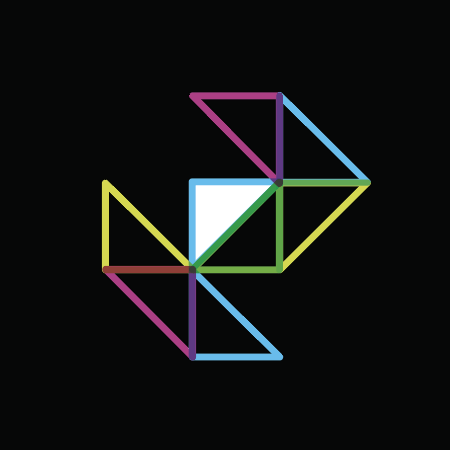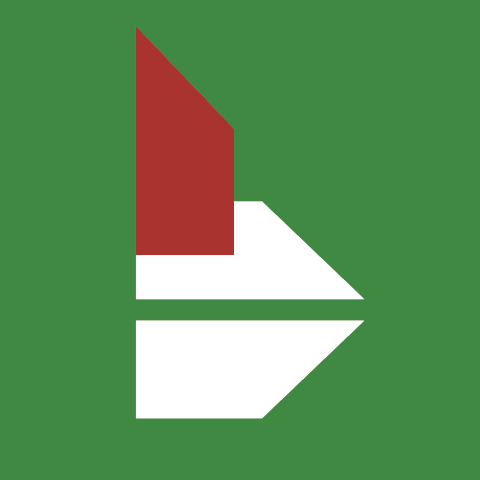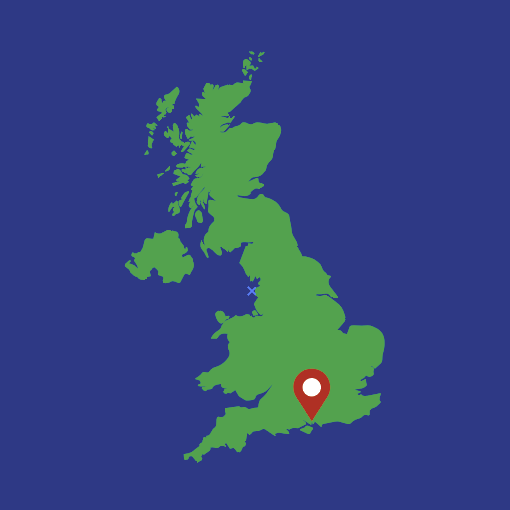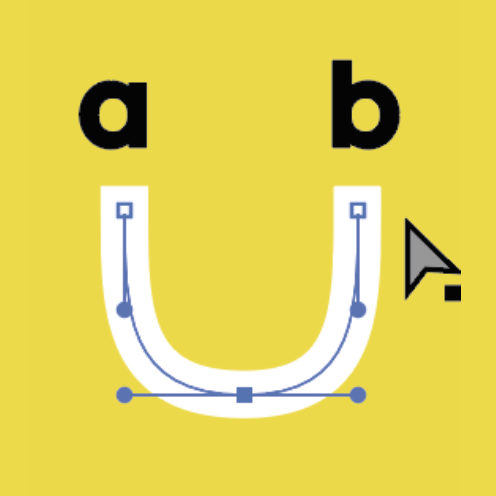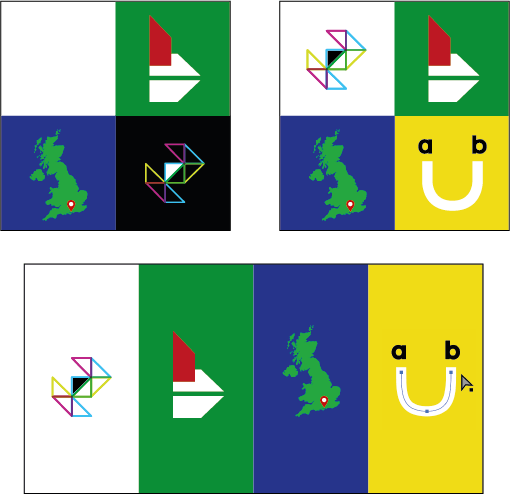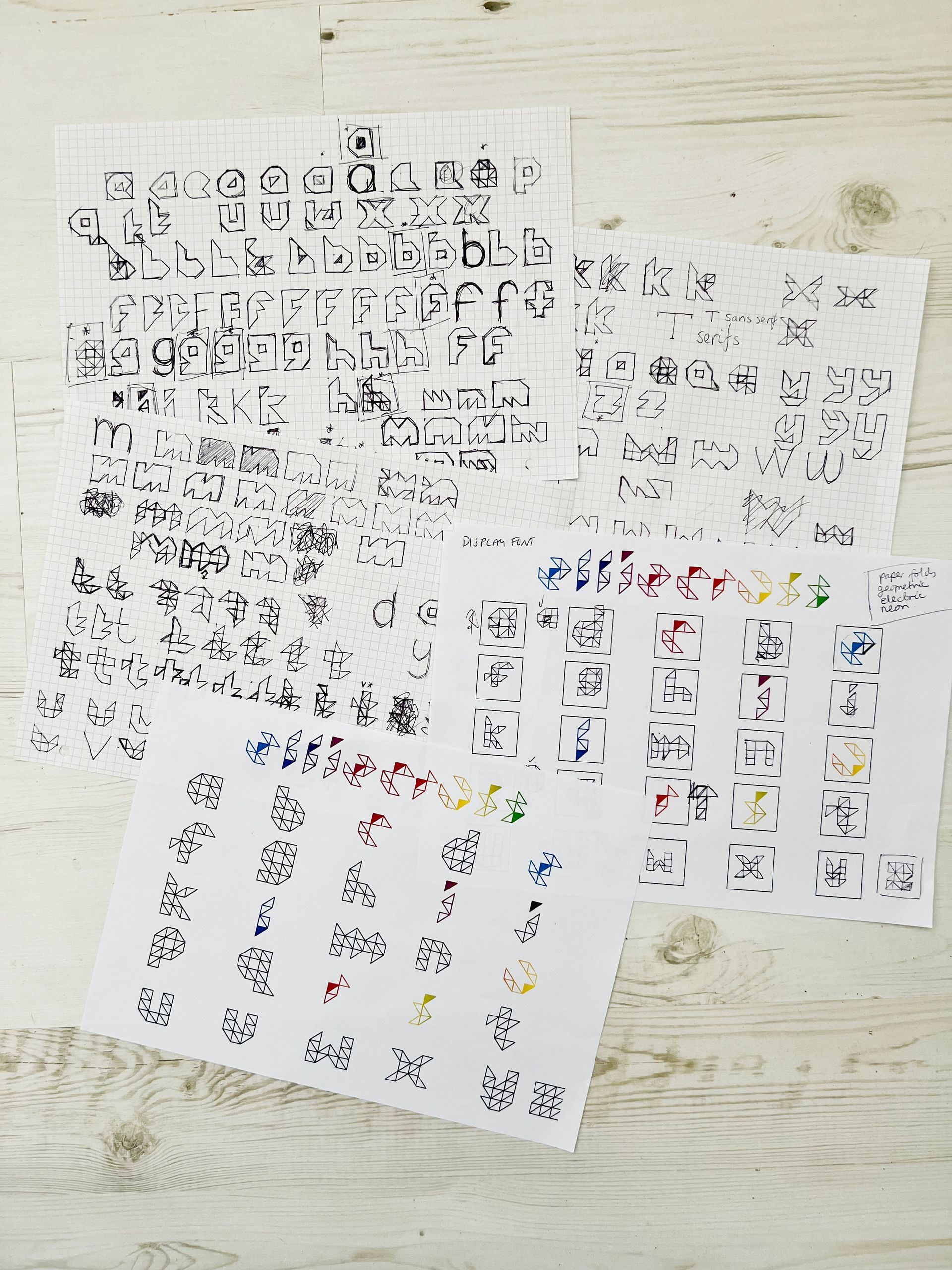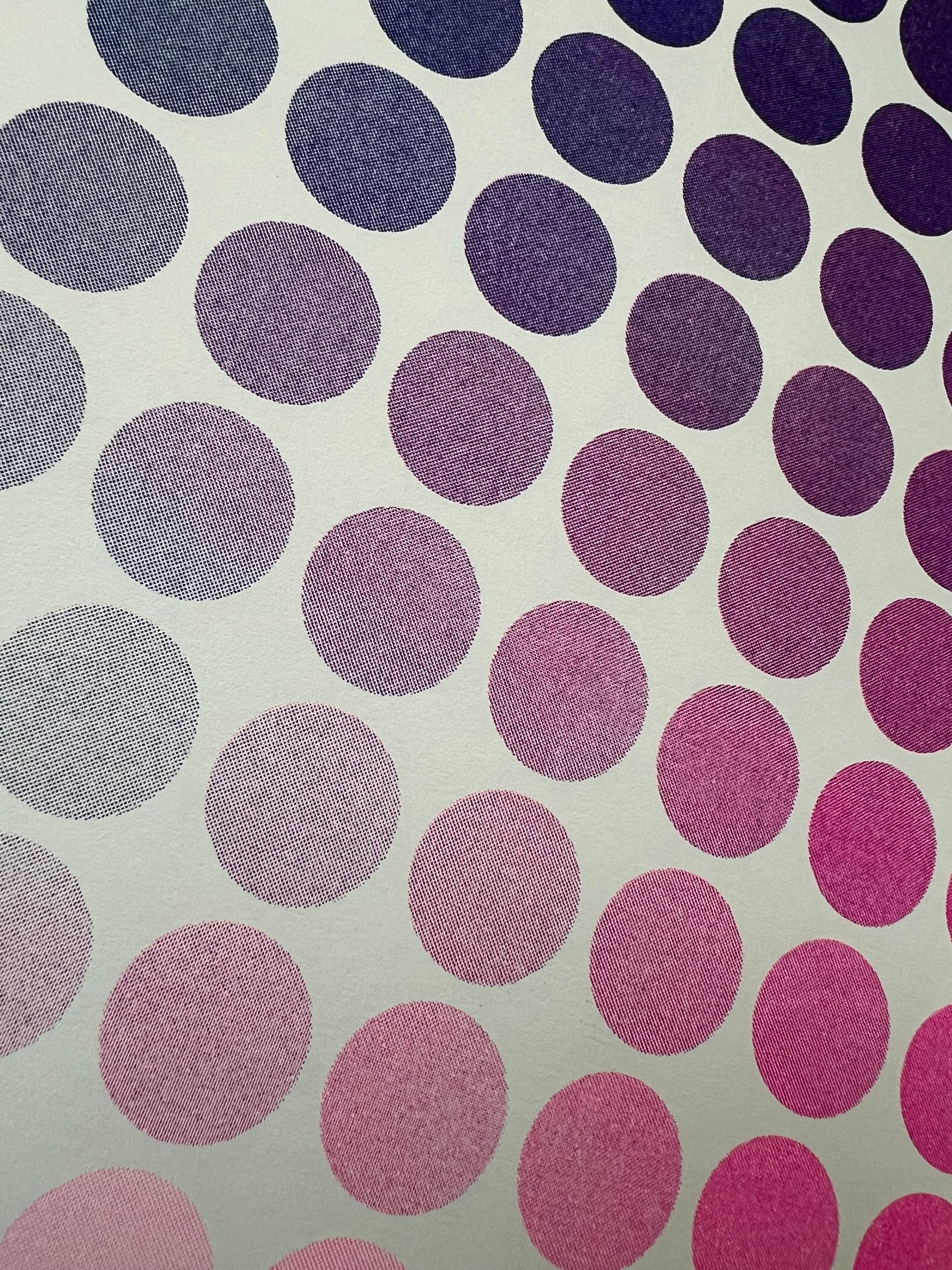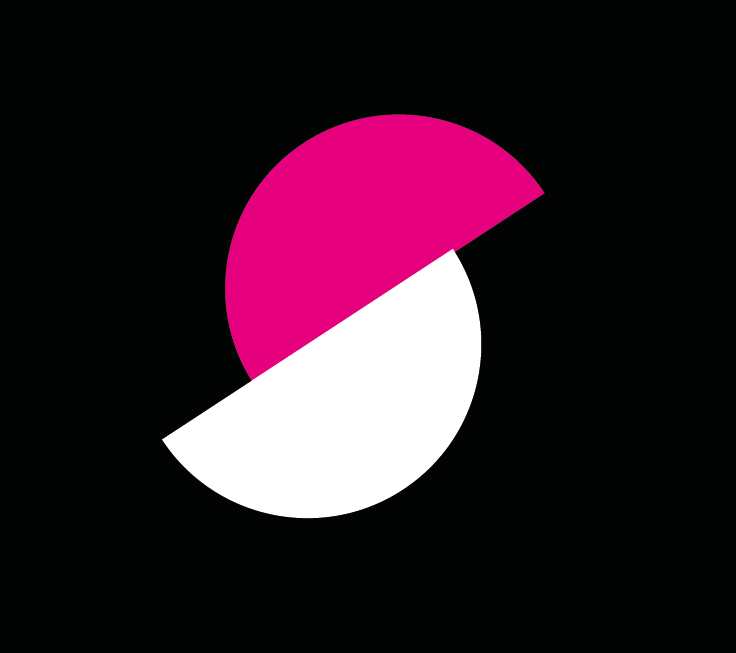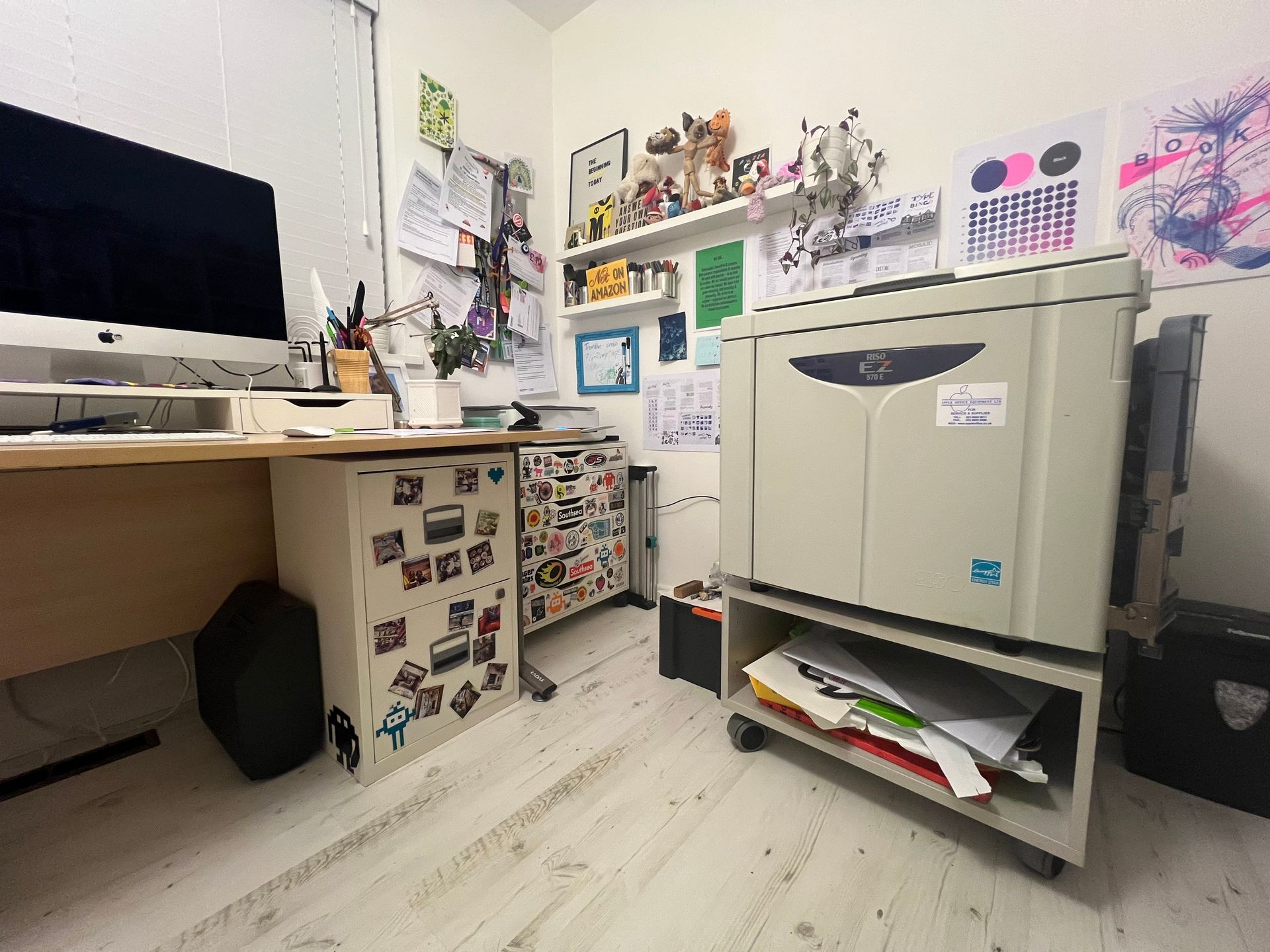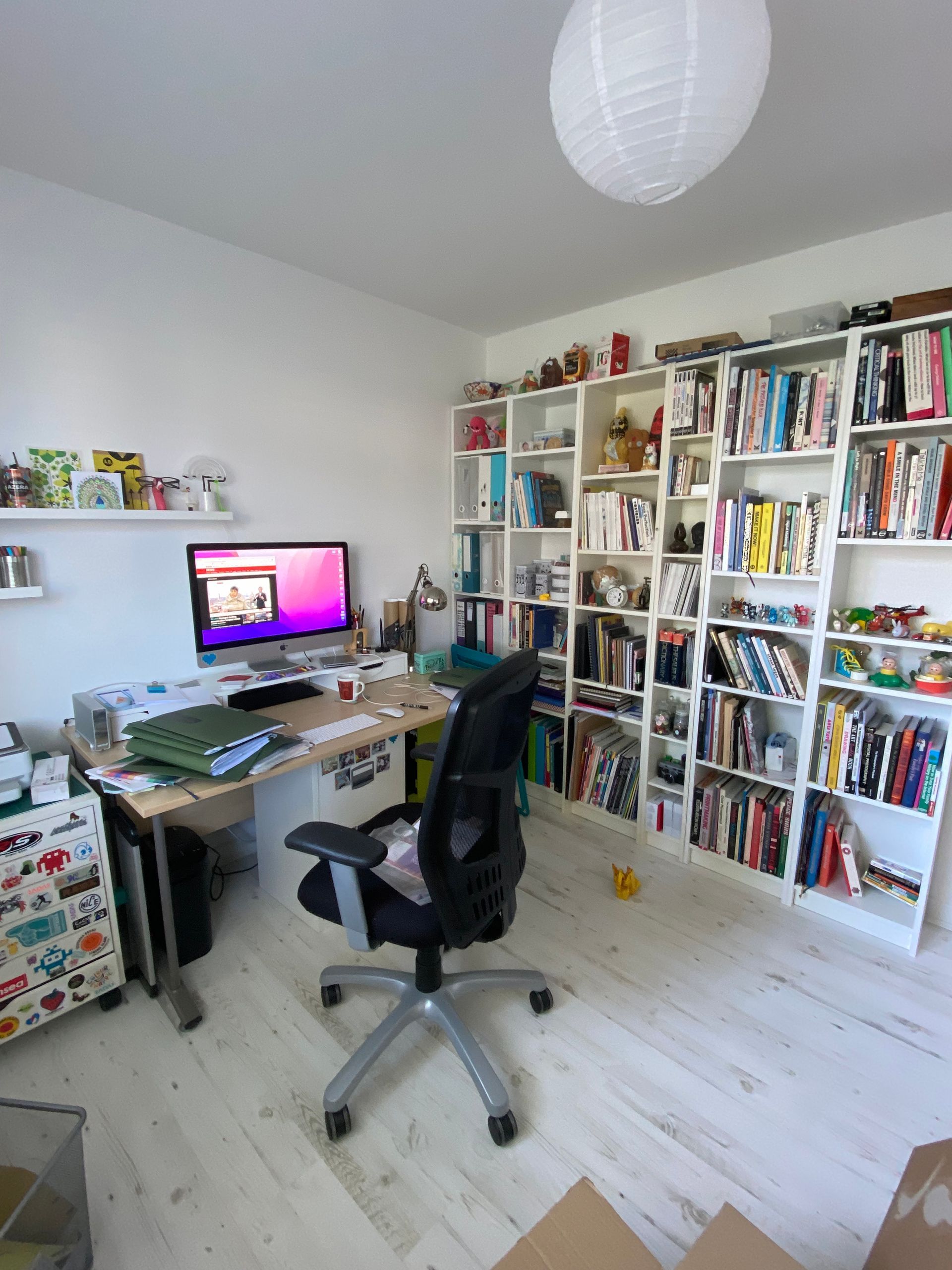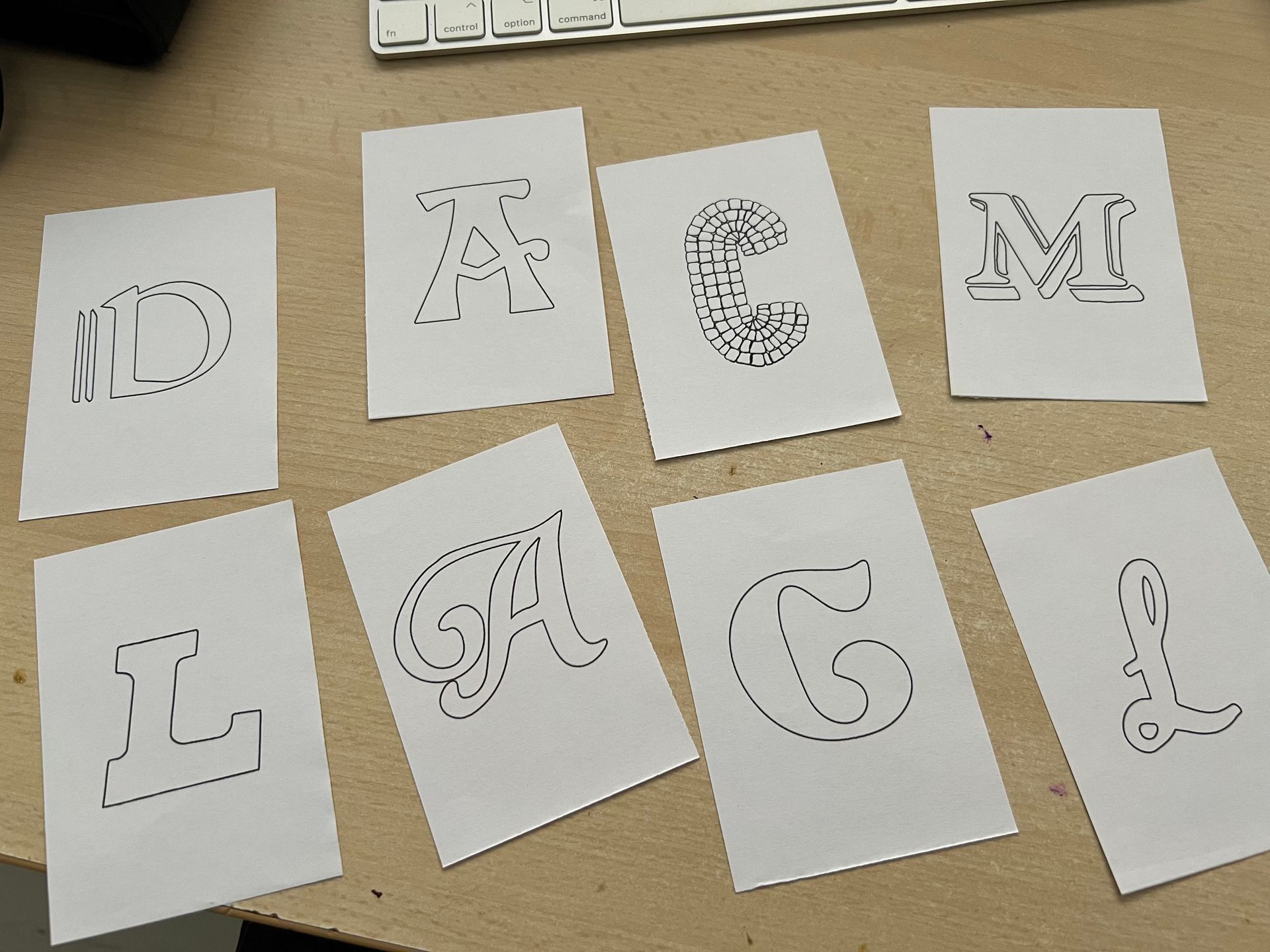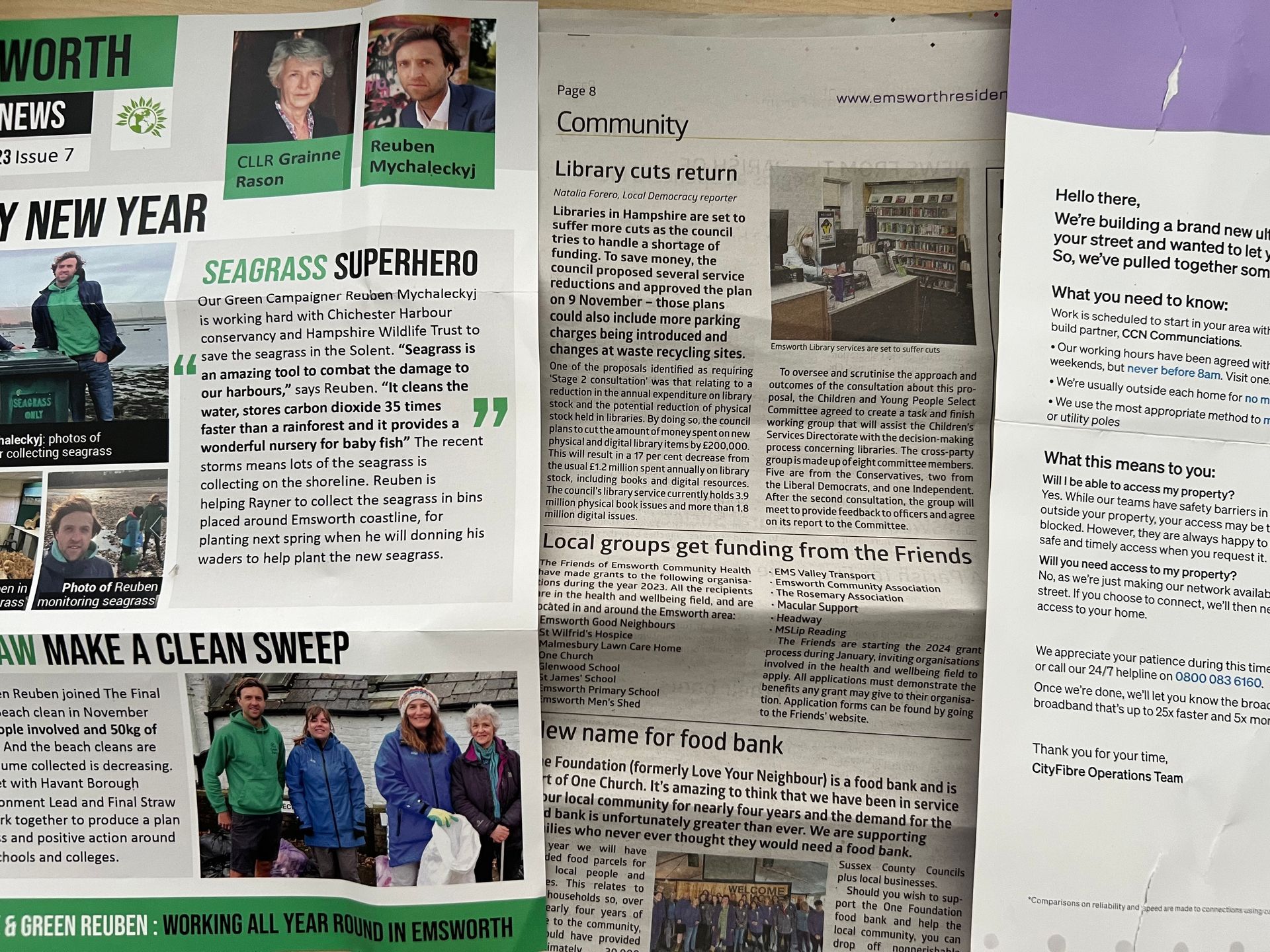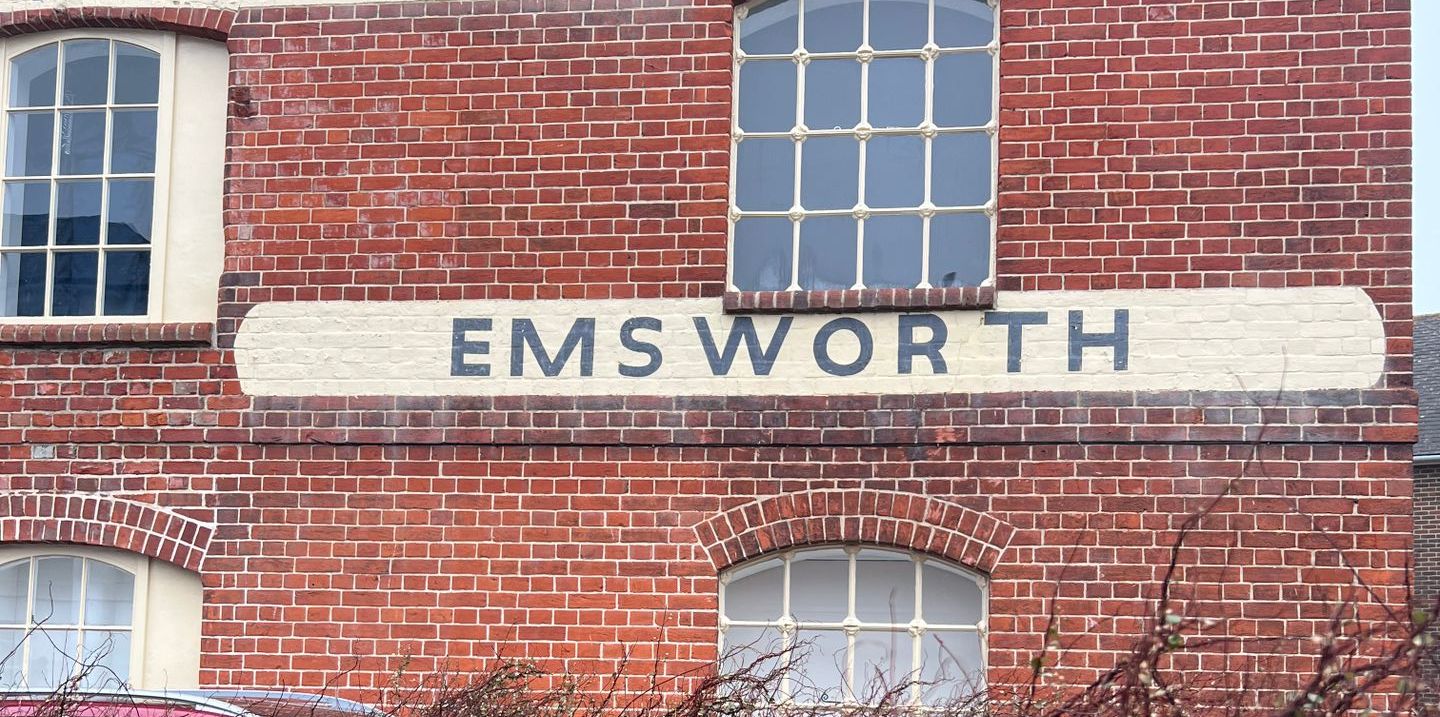Where Are You and Why Design?
Practitioner Case Studies: INTRO
Creative partners, Julian House and Adrian Talbot, have been practicing for 30 years. Both have produced work from their interests. Julian House has a keen interest in music and collected vinyl, which has led him to produce album artwork and onto animation and film. Adrian Talbot is more of a traditional designer working with 2D print and communication. His interests lie with print and letterforms, so his work orientates towards identity and logo design.
Based in London and majority of their clients are London based but with the advance in communication technology they do have clients that are further afield.
Talbot remises about studying graphic design and not really knowing much about it, apart from quite liking art at school. Perhaps then developing an interest in words and pictures and how they combine to tell a story. Seduced by works of Neville Brody and initially more interested in aesthetics over effectiveness of the story. Now his work is more refined and looks more at how to tell a story effectively with the minimum number of components. The arrangement of words and pictures and space still excites him 30 years later.
Quadriptych Challenge
Produce a quadriptych (four images) to illustrate your answer to each question:
Who? What? Where? and Why?
Who?
My ‘who’ design is the ‘e’ from my visual identity. It is made up of pieces just like a jigsaw all representing pieces of me.
Each piece representative of who I am, roles, responsibilities, work and hobbies, which often overlap, and this is communicated by the triangles intersecting and overlapping.
I chose to have some missing pieces from each letter to represent the idea of a design in progress and the problem solving that comes into the design process but here I feel it reflects my ongoing development and that we are never an end product, just evolving to become our better selves.
The bright colours reflect digital design, working on screen RGB and my love of colour. I have made a complete alphabet in this style and made my first font, ‘geoelectric’. It was a fun personal project, which still requires some refinement before releasing it into the wild.
Additionally, the letter is representative of my love of typography and letterforms.
I take influences from everywhere, my surroundings, experiences, books, people, my environment...
What is it that you do?
I design for both print and web which has brought a nice variety of work often bridging the two. Most work has started with logo/identity design and then progressed to further work.
A board game called, Batax, has been my pivotal project and quite a journey. Initially, I was brought in to realise the graphics beginning with the logo. Quickly I was immersed with all aspects of the project including the game itself.
The project has grown to encompass all aspects of the games design including packaging, the playing board itself and refining the instructions.
Working alongside its creator, we have researched materials to make it environmentally friendly. We have refined the board and playing pieces to make them easy to manoeuvre and navigate without interfering with opponent’s game play.
Being a strategy game we wanted it to have both a traditional but modern feel, which I believe we have achieved.
The reason for this being a pivotal project is that it has encompassed so many of my skills as a graphic designer yet challenged me in new realms of game and product design. It demonstrated my adaptive nature working across mediums, allowed me to play and take risks with the games identity. Another love is playing with shapes, so using the playing piece shape to create the logo was an absolute dream.
The project has also led to more collaborations with the artist who conceived Batax and we have gone on to design children’s books, an initiative to motivate people to talk and be proactive in making changes to their lives to help in the fight against climate change amongst other things.
My ‘what’ square shows the ‘b’ for Batax’s logo formulated from the shape of the games playing pieces.
Where?
I am based in Emsworth near Portsmouth on the sunny south coast. I have the best of both worlds in that I am close to the calm countryside and the tranquil sea, while only a short distance from the hustle and bustle of the city, Portsmouth, which has quite a thriving design community. Here I have access to a range of local printers, as well as a print making studio where I have access to screen printing facilities to escape the digital and get my hands dirty.
In the practitioner case studies, Sam Winston, talks about his need for silence and space to generate ideas, which resonated with me from my own experience working in a design studio after graduating from my BA. The studio was open plan with all our desks in the centre of the room. Three designers on one side and MD and account managers on the other. The setup allowed for easy communication between us all with questions often being fired across the tables. It also made for great collaboration for us designers when it came to projects, as we may be given a project to start on individually, but when it came back from the client with changes or edits it could go to any one of us depending on who was free. We would have a weekly meeting at the beginning of each week to discuss where each of us were, what work was on or coming in etc.
This setup and way of working didn’t work for me, it felt chaotic. I found the setup distracting and couldn’t concentrate. I also found you were constantly having to familiarise yourself with each job and what the previous designer had done/not done, as we all seemed to have different workflows and ways of artworking.
Today, I work from a small studio at home. I work independently where I have the space and quiet to formulate my ideas. I am responsible for each project and therefore I always know where I am. At times I miss sharing a space with another creative to discuss and bounce ideas off each other.
However, many of my recent projects have been collaborative, which has been amazing. We discuss the project and the best way to tackle it together and then we each go our separate ways to work on our elements. We then meet regularly to discuss progress or communicate remotely and so on until the project is complete. This has been a massive breakthrough in my design process and what works for me as a designer.
With the digital age I do not find my location hinders me. I have local clients whom I meet in person and others whom I communicate with remotely.
This ‘where’ design demonstrates where I am situated in the uk. I thought I would keep this simple for those who are located elsewhere in the world rather than using place names, which could be lost on the reader.
Why Design?
I had an interest in art and design at school and loved design and communication. I’d spend many a lesson doodling and playing with lettering, but I was steered away from graphic design and didn’t really know what direction to take. After several years of dead-end jobs where I had worked my way up as far as I could go, I returned to college and took a part-time desktop publishing course. Little did I know this was the beginning of my road back to design! I became computer literate (unleashing my inner geek) and was hungry for more. I made the decision to return to full-time education and study A Levels. At this stage I was still unsure what I really wanted to do. After choosing two of my subjects, information communication technology and communication studies what would be my third? My tutor suggested Law, but after literally falling asleep in class I needed a rethink. Scouring the subjects there was one that leapt out at me, Graphic Design. I loved printmaking, rendering letters, and extending my software knowledge. That was it back on my path and went on to study a BA in Communication Design.
My work so far typically started life by hand and I loved exploring new mediums, screen printing, letterpress, photography and so on. Once I graduated I landed a dream job at a local design and marketing studio. I learnt so much, especially software in a very short space of time, including how to delete elements in Quark Xpress using the delete robot (showing my age)! With all the work now produced digitally for corporate clients, I began to hate everything about studio life. I remembered the advice of one of my university tutors, “make the most of your freedom and experiment”, now I knew what she meant.
I took a complete break from design until a graphics technician job came up at a local college and I loved it. I enjoyed using my knowledge and expertise to help the students and no two days felt the same. I fell back in love with Graphic Design and began freelancing again on the side. College gave me the fix with the handmade and getting my hands dirty, while freelancing kept my hand in all things digital.
This is pretty much where I am today, freelance projects working digitally for my freelance clients/ projects and then back to analogue for extracurricular play on personal projects. It is all about balance.
For me design is a journey, each project different and presenting a new challenge. The only commonality with each project, being it is a journey from A to B. A is the beginning; the brief, and B the destination; the end design. A client may come to me with a starting point to design a company logo and then they often present me with other work, a new journey to another destination. For me this keeps things interesting and enables me to delve into realms and subjects I may not have ever come across. I am always learning and I get to play along the way!
"Design is a tool to solve a problem; it is visual communication with carefully constructed words and images to convey a message simply and effectively. Design can move you, it can call for action, it can instruct you, it can inform you. Design is a visual language that can speak to you!"
This ‘why?’ design is a simple diagram to represent a journey from A to B and the dip represents the design process and how often you can trough part way but you keep plugging and you come out the other side to an end destination, the final design.
It combines words (although here just letters) and image to define what graphic design is to me and showing the anchors and handles is to convey the notion of being constructed… design also makes me smile! :)
Initial idea and Development
Much of my work is created using Adobe Illustrator especially logo designs, so I felt vector graphics would be a good way to represent me and what I do.
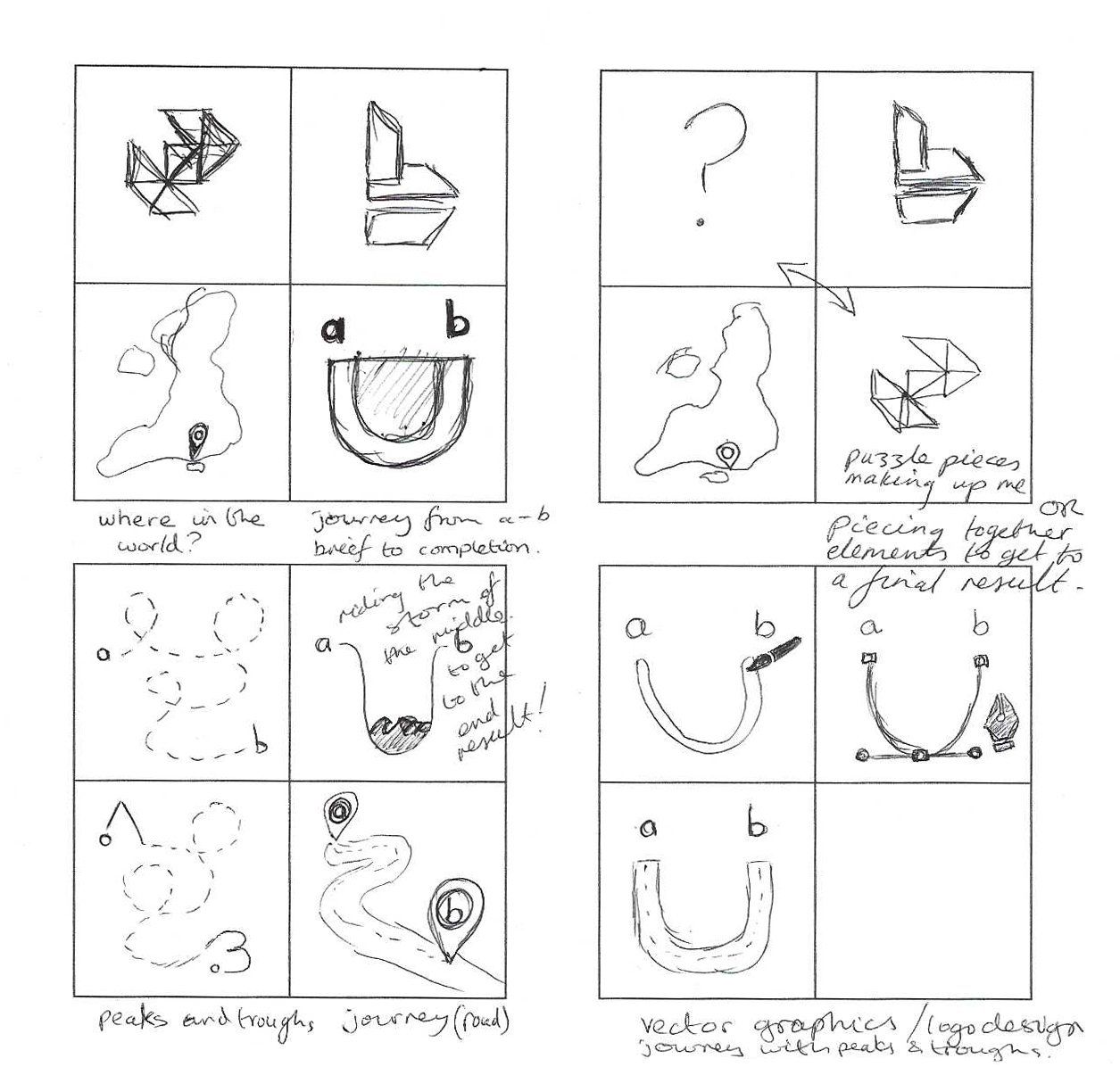
Initial layout and ideas above and digital development below.
Initially, I was working with a four-square grid but found the elements didn’t sit comfortably with each other and they felt unbalanced, so I pursued a four panel grid instead. The idea for a panel layout came from Regular Practice’s talk on the quadriptych and hieroglyphic inscriptions. I like how each column flows to the next. In choosing to use simple vector graphics these too reminded me of the visual language associated with hieroglyphs.
Final Quadriptych
